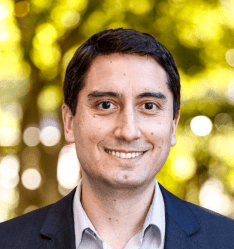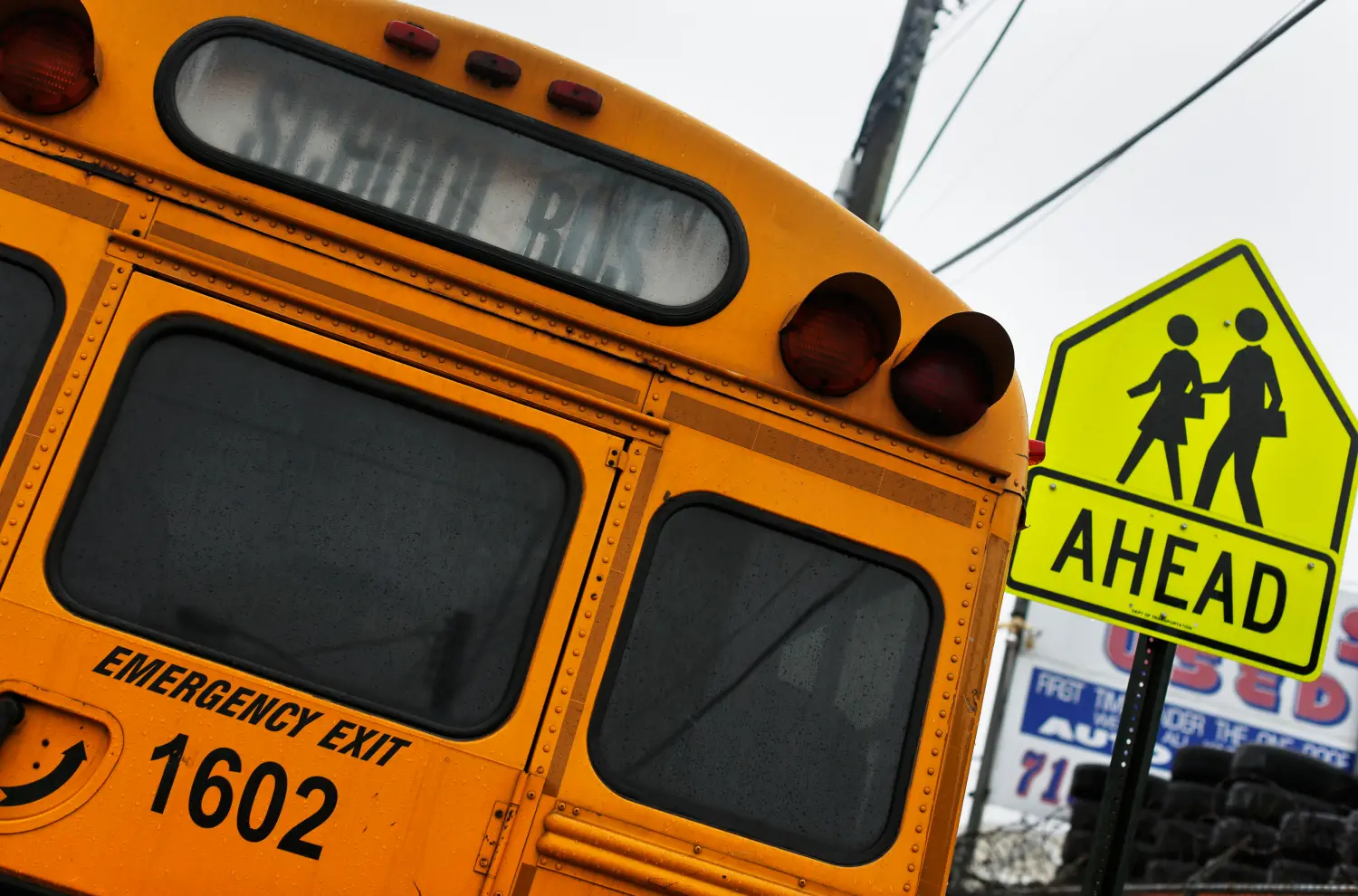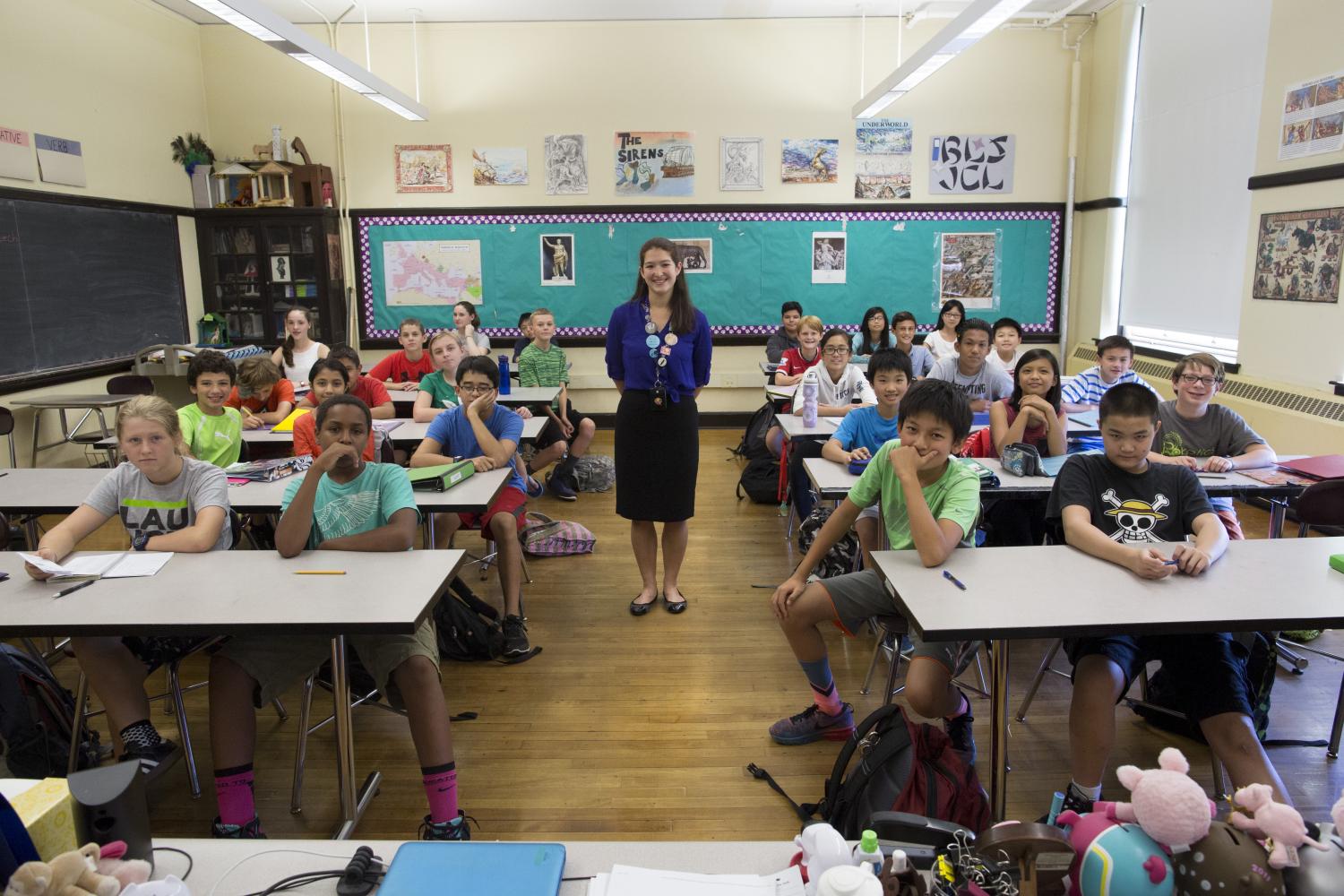This report is part of “A Blueprint for the Future of AI,” a series from the Brookings Institution that analyzes the new challenges and potential policy solutions introduced by artificial intelligence and other emerging technologies.
How students are assigned to schools is changing, especially in urban areas. After decades of using students’ home addresses to determine school assignments, many U.S. cities are now turning to placement algorithms—alongside school choice policies—to determine which students can attend which particular schools. These algorithms, built on the Nobel Prize-winning theory of market design, elicit families’ ranked preferences for schools and use those preferences, along with schools’ priorities, to match students and schools.
In this paper, we examine the unified enrollment (UE) systems that use placement algorithms to make student assignments. After describing these systems, we explore their considerable promise and peril. We argue that UE systems can markedly improve the equity and efficiency of urban education systems. However, they must navigate difficult political terrain—with strong forces pushing against equity—and are vulnerable to misunderstandings by system users and designers. In other words, for all of their technical elegance, these systems’ ultimate success will depend on how people interact with them.
Background on student placement algorithms
A defining feature of the U.S. public education system is the strong link between where children live and which schools they attend. This is problematic in a country with severe levels of racial and socioeconomic segregation and inequality. School choice reforms, like charter schools and open enrollment policies, offer one approach to weaken this link, as they provide families with additional tuition-free options. Yet these reforms often bring obstacles along with them. As a result, many cities’ school choice policies—especially as they relate to student placement—have evolved over time. What began as highly decentralized systems turned to common applications and now UE systems that use placement algorithms.
“A defining feature of the U.S. public education system is the strong link between where children live and which schools they attend. This is problematic in a country with severe levels of racial and socioeconomic segregation and inequality.”
Consider, first, a decentralized school choice environment in which families can apply to various charter schools that operate alongside a traditional district, with each school managing its own enrollment process. In this environment, parents find themselves with a host of logistical challenges—navigating multiple schools’ deadlines, requirements, and informational materials—while school leaders find themselves handling a burdensome process.
In response, some cities created a common application that lets families apply to multiple schools at once. In New Orleans, for instance, the Recovery School District instituted a common application in 2008 for its direct-run schools. This simplified the application process by reducing paperwork and standardizing deadlines and procedures—but problems remained. School leaders still had to manage their own enrollment process and paperwork, raising concerns about transparency and inefficiency. They struggled to project how many students would enroll—and how many teachers they should hire—since a student could hold a seat in multiple schools while deciding which one to attend. Moreover, with enrollment processes left to individual schools, there was no mechanism to match students and schools that incorporated families’ preferences for some schools to which they applied over others.
Advances in economics offered potential solutions to these problems. In 1962, mathematicians David Gale and Lloyd Shapley proposed a deferred acceptance (DA) algorithm to address instability in markets. Over the years, the theory has been refined and the applications extended. Alvin Roth, who shared the 2012 Nobel Prize in Economics with Shapley (four years after Gale’s death), put algorithms to use in matching kidney replacements to patients, medical residents to hospitals, and, most relevant here, students to schools through UE systems. Other economists, including Atila Abdulkadiroğlu and Tayfun Sönmez, worked on both developing the theory behind student assignment mechanisms and their practical application in cities such as Boston.
The first step in the UE application process is for families to submit rank-ordered lists of the schools they most want their children to attend. In Camden, New Jersey, for instance, applicants can request up to eight schools. In Denver, they can request up to 12. Critically, the placement algorithm is “strategy-proof” in the sense that applicants cannot game the algorithm by ranking schools out of their true order of preference. Applicants are not punished for ranking a school highly—e.g., as a first-choice school—if the probability of admission is low. (This is not the case for some non-DA types of placement algorithms, like those long used in Boston.)
Along with parents’ requests, the algorithm needs a procedure for determining how to allocate seats when demand for a school’s seats exceed supply. One option is to use only random lottery numbers. In practice, however, most cities give priority to certain groups of students and use lottery numbers to order students within these groups. Priority categories can be school-specific (e.g., sibling priority to a single school) or universal (e.g., priority to any school because one’s current school is closing).
The core algorithm tends to be quite simple. Take, for example, the DA algorithm that places students in New Orleans. First, it attempts to place all applicants in their first-choice school. If a school is oversubscribed, the algorithm tentatively admits students in order of their priority ranking (based on priority categories and lottery numbers) until the school reaches its capacity. Any students who do not make this cut are eliminated from consideration at that school. However, these students then receive full consideration at their second-choice school, even if that means displacing a student who ranked that school first. The algorithm cycles through this process until it has considered all relevant school requests and then finalizes the assignments. No student receives a seat in more than one school.
The use of this type of algorithm is what distinguishes a UE system from a common application. A unified enrollment system includes a common application, but it also asks applicants to rank-order schools and then uses an algorithm to make placements across a large number of schools.
Denver and New Orleans are thought to have launched the country’s first UE systems with DA algorithms in 2012 (although other cities, like San Francisco, had been doing similar work). Since then, many cities have followed suit, including Camden and Newark in New Jersey, Chicago, Indianapolis, New York, and Washington. These UE systems differ from one another on various dimensions. For example, while nearly all New Orleans public schools and some private schools are available through its OneApp system, New York’s system focuses on public high schools. Some cities, like Chicago and Indianapolis, offer a second round of applications for families who lack or dislike a placement after the first round; other cities do not. While Denver’s priority categories consist of only sibling and geographic preference, New Orleans has given priority to students whose schools are closing, and some schools in Washington give priority to children of staff or those who would like to transfer from another school managed by the same organization. Several other cities, including Boston and Detroit, are reportedly now considering unified enrollment.
Opportunities
Relative to less centralized approaches to student enrollment, UE systems can, under certain conditions, create significant benefits for applicants and school leaders alike. In addition, these systems can serve public interests by providing greater transparency and more tools to policymakers to align public education systems with the public’s goals. Next, we describe some of these potential benefits.
Applicants
UE systems generally simplify the application process for parents and improve the matches between students and schools. Simplification comes from the ability to fill out a single application by a single deadline, and from the tendency for cities to improve and centralize their school information offerings when they adopt UE systems. This could lead to parents considering more schools and making more informed decisions for their children.
Beyond simplification, DA algorithms can improve the likelihood of a desired placement for their children. A decentralized system in which schools conduct their own lotteries for admission has no mechanism for incorporating applicants’ varied preferences. DA algorithms provide that mechanism.
School leaders
By centralizing application and assignment, UE systems keep school leaders from having to manage burdensome processes. While some school leaders decry the loss of control to centralization, many leaders welcome the opportunity to devote their resources and attention to other matters.
DA algorithms also facilitate planning for school leaders. In decentralized choice systems, a student could hold seats in many schools simultaneously. UE systems enable school leaders to project enrollment more accurately by allowing a student to hold a maximum of one seat at a time.
The general public
UE systems can promote transparency and equity by limiting schools’ opportunities to manipulate admissions and making schools more visible and accessible to parents. They generate data on parents’ preferences and the effects of schools that can inform educational policy and practice. In addition, they provide a method, albeit a controversial one, to grant priority access to desirable schools to the most vulnerable, disadvantaged students—in effect, an opportunity to nudge the system to be more equitable or integrated.
Risks
We have described opportunities for UE systems to generate benefits. The extent to which they fulfill their potential depends on the details of their design and execution, and on how well system leaders navigate the related challenges.
Applicants
The school choice process is difficult, and applicants’ mistakes and misunderstandings can have harmful effects. Some of these issues exist with or without a UE system, like parents being uninformed or misinformed about the schools available. Others are more specific to UE. Applicants might attempt to “game” a strategy-proof DA algorithm—by, for example, ranking higher-probability schools ahead of their true first choices—and undermine their placements. They might underestimate the risks of not requesting enough schools, finding themselves without a placement after the first round (when the most desirable options are typically available). To date, many cities have observed applicants requesting far fewer than the maximum number of schools available.
“Perhaps the greatest threat, however, comes from applicants’ perceptions of UE systems and the broader politics of school choice. As long as some schools are oversubscribed, UE systems will tell some applicants they cannot have the schools they want.”
Perhaps the greatest threat, however, comes from applicants’ perceptions of UE systems and the broader politics of school choice. As long as some schools are oversubscribed, UE systems will tell some applicants they cannot have the schools they want. For example, in Chicago’s first year with unified enrollment, about half of applicants did not receive their first-choice program and 19 percent did not receive a top-three choice. These rejections have consequences. First, they can undermine public satisfaction with UE systems and the systems’ long-term political viability. Second, they can lead residents to apply pressure on policymakers to grant admissions priority to their children. Political influence is not evenly distributed, and relatively wealthy parents have advocated for policies within choice systems—like priority for students who live in a school’s geographic zone—that improve access for the privileged at the expense of the underprivileged.
Policymakers
Similar to challenges arising from UE applicants, challenges arise from the mistakes, misunderstandings, and biases of policymakers. Even if DA algorithms are relatively simple, predicting how student assignment policies will affect enrollment and outcomes is difficult. This policymaking complexity has multiple causes. For one, after settling on a plan—like giving priority to students who live in a school’s geographic zone—policymakers confront questions about how to operationalize it in an algorithm. What happens if the priority applies only to a subset of the seats in a school? What are the consequences of putting it higher or lower in the hierarchy of priorities? These questions are hard to answer without considerable analysis.
Complicating matters further, school-choice behaviors and student-assignment policies are inherently interconnected and dynamic. Families make school requests. Their placements and their peers’ placements depend on how the algorithm is designed, and their enrollment decisions might depend on their peers’ enrollment decisions. These decisions can change schools, which can change applicant behaviors in subsequent years. All of this creates challenges for policymakers to assess a priori how policy decisions will affect students and schools—and creates potential for unintended negative consequences.
Furthermore, UE systems require policymakers to make tradeoffs even across the principles they might prioritize. The most efficient algorithm is not always the most transparent or understandable to parents, as New Orleans policymakers found when they abandoned a “top trading cycle” (TTC) approach in 2012 to 2013. After-market placements also can be difficult. An approach that seems straightforward and benign on paper—like working informally with families and schools to place students who missed the application window—could create opportunities to game the process.
“Furthermore, UE systems require policymakers to make tradeoffs even across the principles they might prioritize. For example, the most efficient algorithm is not always the most transparent or understandable to parents.”
Some challenges arising on the policymaker side are less innocuous. Over the last few years, two chancellors of the District of Columbia Public Schools (DCPS) left their positions amid controversy related to the district’s UE system. In one case, the chancellor was found to have given preference to her close acquaintances; in the other case, to his own child. While UE systems reduce the opportunity for indiscretion at the school level, they can create opportunities for indiscretion at other levels.
Recommendations
In response to these challenges, we propose a set of policy recommendations for UE systems:
First, clearly articulate the goals of the UE system. UE systems embody and implement the goals that policymakers have for student assignment. Policymakers should be forthcoming about those goals—e.g., whether to integrate schools or give all families a neighborhood option—and make policy decisions that align with them. Specifically, we suggest creating a statement of values for student assignment. Some of these values might exist in tension with one another, but community members should know how policymakers approach these tensions.
In addition, system leaders should communicate about what UE systems cannot do. UE systems can efficiently allocate the seats that exist. They cannot create good schools by themselves, nor can they ensure that all applicants receive a seat in their first-choice school. Being clear about these limitations could help to direct some community frustrations to the true causes of those frustrations.
Second, actively disseminate information about the UE system, and be transparent. System leaders must actively inform the community about the choice process. The goal is to inform families, not just make information available. That could require different types of outreach for certain subpopulations such as those in poverty, new to the city, or not fluent in English. The costs of information failures can be high. With application deadlines many months before school starts, a parent might get locked out of desirable schools long before it occurs to her to start searching.
System leaders also should be transparent about how the placement algorithm works. Some cities provide animated videos that explain the algorithm in accessible language. Beyond this, the algorithm that the district uses—including its software code—should be publicly available. Many districts have contracts with vendors who write and run code for UE systems. While these vendors have valid concerns about protecting proprietary information, these concerns do not outweigh the public’s right to see how children are assigned to public schools. Making this information public can enhance the perceived legitimacy of the system, make policymakers aware that the public (and researchers) can scrutinize their decisions about algorithm design, and enable more people to assess and comment on the algorithm.
Third, use emerging technologies to improve the information available to policymakers. Understanding the implications of algorithm design decisions sometimes requires one to assess the complex dynamics of applicant behaviors, schools’ responses, subsequent applicant behaviors, and more. While UE system administrators might prefer to avoid doing this work themselves, researchers can use complex adaptive systems models to illuminate the likely consequences of various decisions. One such approach, agent-based modeling (ABM), is especially well suited for this work. A comprehensive description of ABM is beyond the scope of this paper, but ABM offers policymakers a powerful tool to evaluate the potential effects of policies. ABM has already been used in San Francisco to simulate how school applicants behave and schools evolve under prospective policy conditions, and to inform student assignment policy. These models can incorporate heterogeneity in applicants’ attributes and behaviors, along with realistic geographic characteristics. They can thus act as “virtual laboratories” to explore the likely effects of a large array of potential interventions beyond changes in student assignment policies, such as school openings, school closings, or successful information dissemination. This could be a particularly valuable area of collaboration for researchers and practitioners.
“An algorithm cannot solve every problem in student assignment.”
Fourth, determine how the UE system should—and should not—change in response to community feedback, and recognize that an algorithm cannot solve every problem in student assignment. Any UE system will elicit strong reactions from the community. Policymakers must address these concerns without compromising their goals. Some changes go too far, like succumbing to political pressure for strong geographic preferences if the goals prioritize access for disadvantaged populations. Moreover, policymakers should recognize that the best solution to a student assignment problem might not involve tinkering with the algorithm. If the community is frustrated about the scarcity or inaccessibility of high-quality seats, the best approach might involve decisions about school siting, seat capacity, or student transportation, not algorithm design.
In conclusion, residence-based school assignment is part of the foundation of U.S. public schooling. UE systems, coupled with school choice policies, have taken aim at this foundation—and provided solutions to problems with decentralized school enrollment. They have real potential to make public education more equitable and efficient. However, to fulfill this potential, they must survive numerous challenges. While the heart of a UE system is an algorithm, it will be people’s responses that determine how long and successfully these systems operate.
Jacqueline Lantsman contributed to this paper.
The Brookings Institution is a nonprofit organization devoted to independent research and policy solutions. Its mission is to conduct high-quality, independent research and, based on that research, to provide innovative, practical recommendations for policymakers and the public.
The conclusions and recommendations of any Brookings publication are solely those of its author(s), and do not reflect the views of the Institution, its management, or its other scholars. Brookings recognizes that the value it provides is in its absolute commitment to quality, independence, and impact. Activities supported by its donors reflect this commitment.
The Brookings Institution is committed to quality, independence, and impact.
We are supported by a diverse array of funders. In line with our values and policies, each Brookings publication represents the sole views of its author(s).










